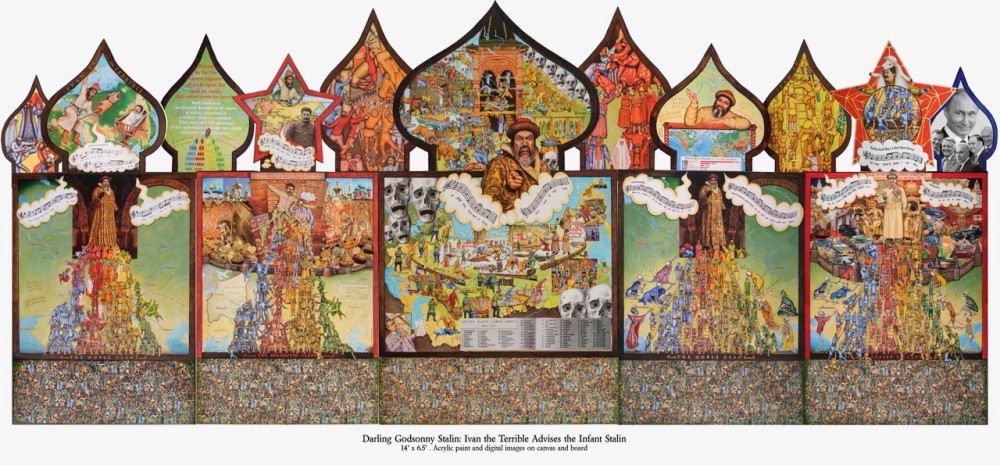
DARLING GODSONNY: IVAN THE TERRIBLE ADVISES THE INFANT STALIN
This monumental satirical artwork contains hundreds of colorful three-inch-high portraits of Russians of all ranks, whose stories are narrated in song by animated characters based on real Russian autocrats. Each diminutive Russian is painted using tiny brushes and a magnifying glass at a moment of life-or-death support for his or her own patronage clan, or of vicious assault on another clan. All of these people have specific connections to others in this artwork. Some individuals, depicted as living or as a skeleton, can be traced through several panels, portraying decades or centuries of history, such as Ivan “the Terrible” in sixteenth-century Panels 1 and 4, and Stalin in twentieth-century Panels 2 and 5, each consolidating autocratic power by engineering almost identical purges, exiles, and executions, centuries apart (Panel 3). Under both Ivan and Stalin, this opens fabulous new ladders for often less gifted survivors to rise beyond their wildest expectations, fueling a new generation’s undying loyalty to the autocrat. The artist’s images and original mordant song lyrics reflect on how all these interwoven relationships have created a profoundly rooted autocratic society that has survived for over 500 years, irrespective of ideological or dynastic changes. Darling Godsonny Stalin portrays the context in which Visions of Transcendence’s Soviet incarcerated and unhoused artists worked. The story sung by Bobroff-Hajal’s animated Ivan the Terrible, as he advises the infant Stalin, explores the centuries-long history of purges, eastward exiles, and GULAG prison camps in Russia and the Soviet Union.